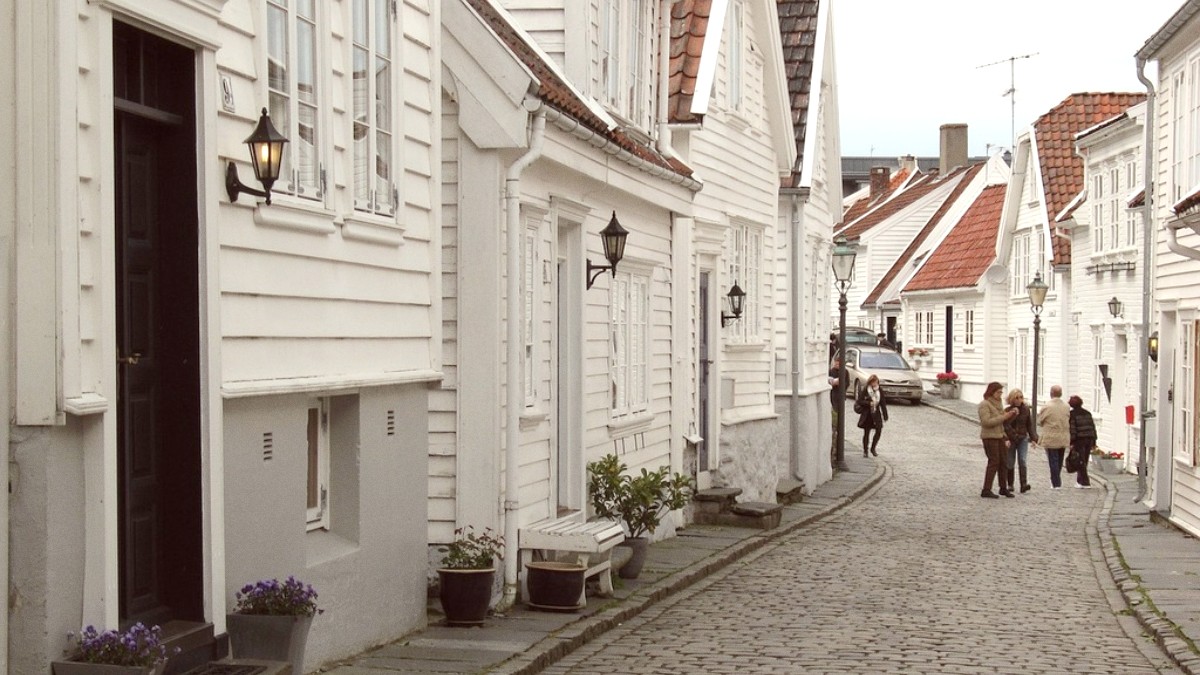
Bergen And The Western Fjords, Norway
Norwegian cooking traditionally uses fish, potatoes, and simple, hearty dishes suited to the Nordic climate. Stavanger, as a coastal city, has a strong seafood heritage.
Oil discoveries in the North Sea brought international residents, diversifying the city's food landscape with a mix of traditional Norwegian eateries and international restaurants.
Cod, salmon, shrimp, and mussels are mainstays. Flavors are clean, emphasizing natural tastes.
Present in traditional and seasonal dishes. Root vegetables and potatoes are common accompaniments.
Seasonal berries appear in desserts and preserves.
A creamy, rich soup with various fish (salmon, cod), shrimp, and vegetables.
A comforting dish, common in coastal areas.
Fresh shrimp, a local delicacy, often served simply with bread, mayonnaise, and lemon.
Especially popular during summer.
Komle (potato dumpling) with salted meat and rutabaga. Fårikål (mutton and cabbage stew).
Komle represents a hearty local specialty; Fårikål is Norway's national dish, eaten in autumn.
Hot dogs (pølse) are ubiquitous at kiosks. Waffles with jam/sour cream are popular sweet snacks.
Kvikk Lunsj (chocolate bar), waffles (heart-shaped), brown cheese (brunost) on bread or waffles.
Stavanger hosts Michelin-starred restaurants.
A wide selection of mid-range options for varied tastes.
Affordable options for a quick bite or light meal.
A place to purchase fresh seafood for self-preparation.
Also a restaurant where you can choose your fish for cooking.
A seasonal market with local produce, artisanal cheeses, and baked goods.
Check schedules for market dates.
Increasingly available in city center restaurants and cafes.
Restaurants generally accommodate allergies; inform staff when ordering.
Use Google Translate app or a phrasebook.
Supermarkets offer good selections of plant-based and gluten-free products.
Held in July, this is one of Norway's largest food festivals, attracting many visitors.
It showcases a wide array of local and international foods.
Lutefisk (lye-treated fish) and Pinnekjøtt (lamb ribs) are traditional Christmas foods.
Check local calendars for other seasonal food events.
Structured walking food tours offer a deep engagement with Stavanger's food culture.
Some local culinary schools or operators offer hands-on cooking classes focusing on regional dishes.
Stavanger's coastal background and international oil industry population shape its diverse culinary profile.
Local produce, especially seafood, takes center stage, prepared to let natural tastes shine.
Coffee consumption is high, and a growing craft beer scene adds to beverage choices.
Vegetarian and vegan choices are increasingly present in city center eateries.
Many places adapt dishes upon request.
Restaurants handle allergies well. Clearly inform staff about any dietary restrictions.
Menus often list common allergens.
Participate in seasonal food festivals, like the renowned Gladmatfestivalen in July.
Embark on guided food tours to sample local specialties and learn about the city's food history.
Seek out Bondens Marked for fresh, locally sourced ingredients and artisanal products.
Prices in Norway are generally high. Budgeting for meals is advisable.